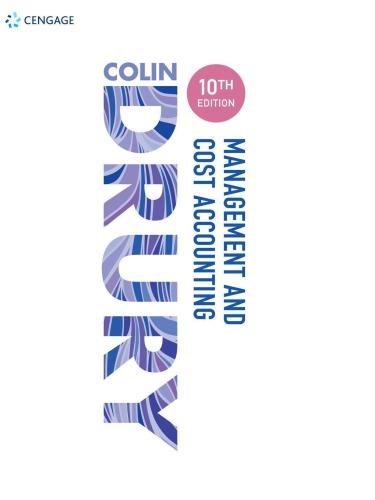Allan Stratton is a cost management consultant with over 35 years of experience, who shares the benefit
Question:
Allan Stratton is a cost management consultant with over 35 years of experience, who shares the benefit of his experience providing tools and resources via the internet. In one of his articles he describes how cost structures vary for different industries and that therefore performance management and measurement should differ and should reflect the cost structures being used.
For example, the semiconductor industry is capital intensive and half the cost structure is depreciation of the capital investment, a cost which is then fixed for the foreseeable future once the investment has been made.
The main expenditures in the oil and gas industry are likely to be incurred by drilling exploratory wells looking for new reserves of oil and natural gas, many of which will turn out to be dry or not commercially viable, or investing in activities related to collecting seismic data and evaluating underground formations.
In a manufacturing organization around half of the costs might be incurred by purchasing component parts or raw materials from suppliers.
Regardless of the industry, in distribution most of the costs will be incurred when purchasing products from manufacturers.
Likewise for retail operations, 70 per cent or more of the costs are likely to be on food displayed in a supermarket or clothes in a clothing shop.
In a service organization such as a software development firm, however, up to 70 per cent of the costs can be people and people-related (offices, computers, etc.).
For a company like Nike, with a hugely valuable brand name, the largest expenditures are likely to be marketing, advertising and promotion.
Questions:
1 How might performance measurement and management vary between different industries?
2 Provide examples of direct labour, direct materials and indirect costs for the different industries mentioned above.
Step by Step Answer:






